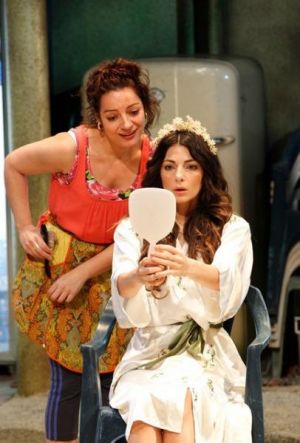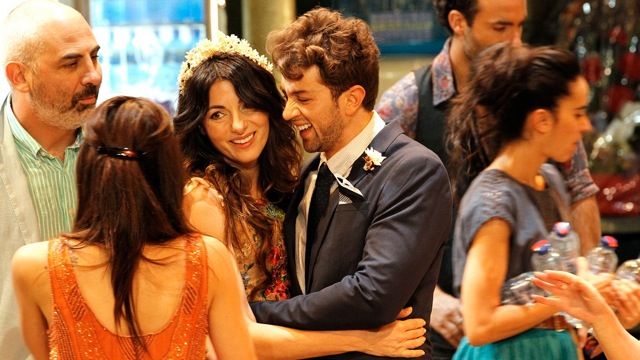Blood Wedding
Malthouse’s production of Lorca’s Blood Wedding sees language as no barrier to understanding a narrative of overwhelming desire and crushing grief, and potentially, injects heat and passion into the bleak, cold and wet Melbourne mid-winter.
 In this contemporized, bi-lingual and ‘universal’ production the performances are strong and flowing. However the bold staging on a vast desert-like space, by director Marion Potts, and atmospheric lighting by Paul Jackson does not adequately support the actors, vocally or physically, to reach up into the large auditorium and move the audience through poetic emotion. Nor is the small cast able to satisfactorily infer the largesse of a huge wedding party or oppressive aspects of community as described and inferred by Lorca.
In this contemporized, bi-lingual and ‘universal’ production the performances are strong and flowing. However the bold staging on a vast desert-like space, by director Marion Potts, and atmospheric lighting by Paul Jackson does not adequately support the actors, vocally or physically, to reach up into the large auditorium and move the audience through poetic emotion. Nor is the small cast able to satisfactorily infer the largesse of a huge wedding party or oppressive aspects of community as described and inferred by Lorca.
This staging’s sense of arid space contradicts the claustrophobic lack of freedom that is at the core of the text.
The intense introductory scene, a duologue between mother (Mariola Fuentes) and her son (David Valencia) the bridegroom, is strong and elucidating and sets a high benchmark. Both actors create a solid and convincing connection between their characters and clearly introduce the framing motif of violence.
Throughout there can be no doubt that Fuentes’s mother is perpetually in pain due to the grief of losing a son to violence and therefore desperate to keep her last remaining child safe. She plays an archetypal whinging mother but vocally any rich timbre at her disposal is not projected to fill the space with nuance.
The design by The Sisters Hayes incorporates intriguing ambiguous elements and motifs of extreme contrast, such as hot and cold. They feature numerous fridges along the back of the set – establishing a reductive and basic environment suggesting domestic spaces and/or the kitchen of a huge reception centre. Stage right is placed a huge wall of symbolic crucifixes covered with what appears to be growing vines that later are transformed into something more disturbing and sinister.
The wedding dress, beautifully worn by Nicole De Silva, is superb.

Towards the end of the production Spanish is flatly translated into English by a voice stripped of musicality. This could be deliberately done to more vividly contrast the Spanish with the English but the result is dreary.
Through working on two of Lorca’s plays The House of Bernarda Alba and Yerma I have felt Lorca to be a man pathologically at odds with society’s constrictions. Interestingly, through the broadening perspective of this production, I realize the culture he wrote about had at its heart a perpetually brutalizing cycle of damage that he was hitting out against.
This is one of those occasions when reading the director’s notes after a performance goes a long way to validate and inform a production.
Although, for me, all aspects of this production are not successfully integrated, it is doubtless, developing and consolidating as the actors become more at home in, and start to assertively fill, the Merlyn with passion and poetry.
Well worth seeing but try to sit as close to the actors as possible.
Suzanne Sandow
Photographer: Jeff Busby
Subscribe to our E-Newsletter, buy our latest print edition or find a Performing Arts book at Book Nook.

